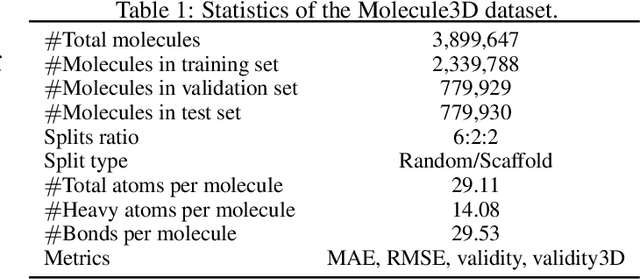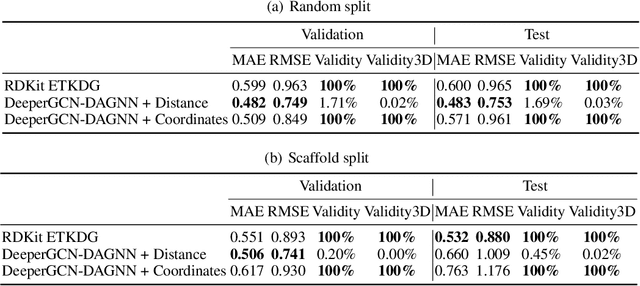Kaleb Dickerson
Molecule3D: A Benchmark for Predicting 3D Geometries from Molecular Graphs
Sep 30, 2021



Abstract:Graph neural networks are emerging as promising methods for modeling molecular graphs, in which nodes and edges correspond to atoms and chemical bonds, respectively. Recent studies show that when 3D molecular geometries, such as bond lengths and angles, are available, molecular property prediction tasks can be made more accurate. However, computing of 3D molecular geometries requires quantum calculations that are computationally prohibitive. For example, accurate calculation of 3D geometries of a small molecule requires hours of computing time using density functional theory (DFT). Here, we propose to predict the ground-state 3D geometries from molecular graphs using machine learning methods. To make this feasible, we develop a benchmark, known as Molecule3D, that includes a dataset with precise ground-state geometries of approximately 4 million molecules derived from DFT. We also provide a set of software tools for data processing, splitting, training, and evaluation, etc. Specifically, we propose to assess the error and validity of predicted geometries using four metrics. We implement two baseline methods that either predict the pairwise distance between atoms or atom coordinates in 3D space. Experimental results show that, compared with generating 3D geometries with RDKit, our method can achieve comparable prediction accuracy but with much smaller computational costs. Our Molecule3D is available as a module of the MoleculeX software library (https://github.com/divelab/MoleculeX).
 Add to Chrome
Add to Chrome Add to Firefox
Add to Firefox Add to Edge
Add to Edge